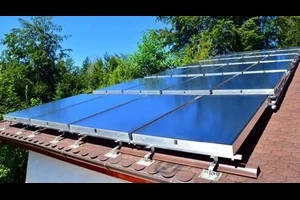In the quest for sustainable energy solutions, solar power stands out as a beacon of hope. Harnessing the sun\'s abundant energy through photovoltaic panels has become increasingly popular as individuals and businesses seek to reduce their carbon footprint. But amidst this enthusiasm, a question arises: Can solar panels generate electricity when placed behind clear plastic? Let\'s delve into this intriguing inquiry to uncover the science behind it.
Firstly, it\'s essential to understand how solar panels function. Solar panels consist of photovoltaic cells, typically made of silicon, which convert sunlight into electricity through the photovoltaic effect. When photons (light particles) from sunlight strike the solar panel\'s surface, they dislodge electrons from atoms within the silicon, creating an electric current.
Now, when we introduce clear plastic into the equation, it alters the dynamics of sunlight transmission. Clear plastic, commonly made of materials like polycarbonate or acrylic, allows light to pass through with minimal absorption or scattering. However, it\'s crucial to note that not all plastics are created equal. Some plastics may contain additives or coatings that can affect light transmission, so choosing the right type of clear plastic is paramount.
The key question then becomes: Can enough sunlight penetrate through clear plastic to power solar panels effectively? The answer lies in understanding the properties of clear plastic and its interaction with sunlight.
Clear plastics, by nature, are designed to be transparent, allowing visible light to pass through largely unhindered. While they may absorb a small fraction of sunlight due to inherent material properties, this absorption is typically minimal compared to opaque materials. Therefore, solar panels placed behind clear plastic can still receive a significant portion of sunlight necessary for electricity generation.
However, it\'s essential to consider factors such as thickness and quality of the clear plastic. Thicker plastics may attenuate more light, reducing the efficiency of solar panels. Additionally, impurities or defects in the plastic can scatter light, further diminishing the amount of sunlight reaching the solar cells.
Furthermore, the angle and orientation of the solar panel relative to the sun play a crucial role. Placing solar panels behind clear plastic at an optimal angle and orientation ensures maximum sunlight exposure, enhancing their efficiency.
Another consideration is the potential for heat buildup between the clear plastic and solar panels. While clear plastic allows sunlight to pass through, it can also trap heat, creating a greenhouse effect. This heat buildup can affect the performance and longevity of solar panels if not adequately managed through proper ventilation or cooling mechanisms.
Despite these considerations, numerous real-world applications demonstrate the viability of solar panels behind clear plastic. For instance, greenhouse roofs often incorporate clear plastic materials to allow sunlight while providing protection from the elements. Integrating solar panels into such structures offers a dual benefit of energy generation and shelter.
Similarly, in outdoor installations where weatherproofing is essential, using clear plastic enclosures can protect solar panels while still allowing sunlight penetration. This approach finds applications in remote locations, camping setups, or even marine environments where traditional solar panel setups may not be feasible.
Moreover, advancements in materials science continue to improve the transparency and durability of clear plastics, further enhancing their compatibility with solar panels. Newer formulations with anti-reflective coatings or UV stabilization features aim to optimize light transmission while mitigating potential degradation over time.
In conclusion, while the idea of using clear plastic to cover solar panels may seem unconventional, it is indeed feasible under the right conditions. By understanding the principles of light transmission, selecting appropriate materials, and addressing practical considerations, solar panels can effectively harness sunlight even when placed behind clear plastic. As we strive towards a more sustainable future, innovative solutions like this offer promising avenues for expanding the reach of solar energy generation.



